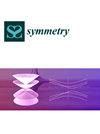Bipolar Fuzzy Multi-Criteria Decision-Making Technique Based on Probability Aggregation Operators for Selection of Optimal Artificial Intelligence Framework
IF 2.2
3区 综合性期刊
Q2 MULTIDISCIPLINARY SCIENCES
引用次数: 0
Abstract
Artificial intelligence (AI) frameworks are essential for development since they offer pre-built tools and libraries that speed up and simplify the production of AI models, leveraging symmetry to save time and effort. They guarantee effective computing by modifying code for particular hardware, facilitating quicker testing and deployment. The identification of a suitable and optimal AI framework for development is a multi-criteria decision-making (MCDM) dilemma, where the considered AI frameworks for development are evaluated by considering various criteria and these criteria may have dual aspects (positive and negative). Thus, in this manuscript, we diagnosed a technique of MCDM within the bipolar fuzzy set (BFS) for identification and selection of optimal AI framework for development. In this regard, we diagnosed probability aggregation operators (AOs) within BFS, such as probability bipolar fuzzy weighted averaging (P-BFWA), probability bipolar fuzzy ordered weighted averaging (P-BFOWA), immediate probability bipolar fuzzy ordered weighted averaging (IP-BFOWA), probability bipolar fuzzy weighted geometric (P-BFWG), probability bipolar fuzzy ordered weighted geometric (P-BFOWH), and immediate probability bipolar fuzzy ordered weighted geometric (IP-BFOWG) operators. The diagnosed technique would be based on these invented probably AOs. Afterward, in this manuscript, we took a case study and obtained the optimal AI framework for development by employing the diagnosed technique of MCDM. We also investigated the comparison of the devised theory with certain prevailing theories to reveal the dominance and significance of the devised theory.基于概率聚合算子的双极模糊多准则决策技术优选人工智能框架
人工智能(AI)框架对于开发至关重要,因为它们提供了预先构建的工具和库,可以加速和简化人工智能模型的生产,利用对称性节省时间和精力。它们通过修改特定硬件的代码来保证有效的计算,促进更快的测试和部署。确定适合和最佳的人工智能发展框架是一个多标准决策(MCDM)困境,其中考虑的人工智能发展框架是通过考虑各种标准来评估的,这些标准可能具有双重方面(积极和消极)。因此,在本文中,我们在双极模糊集(BFS)中诊断了MCDM技术,用于识别和选择最优的AI开发框架。在这方面,我们诊断了BFS中的概率聚合算子,如概率双极模糊加权平均(P-BFWA)、概率双极模糊有序加权平均(P-BFOWA)、即时概率双极模糊有序加权平均(IP-BFOWA)、概率双极模糊加权几何(P-BFWG)、概率双极模糊有序几何(P-BFOWH)和即时概率双极模糊有序加权几何(IP-BFOWG)算子。诊断技术将基于这些可能发明的AOs。随后,在本文中,我们通过案例研究,利用MCDM诊断技术获得了最优的AI开发框架。我们还研究了设计理论与某些流行理论的比较,以揭示设计理论的主导地位和意义。
本文章由计算机程序翻译,如有差异,请以英文原文为准。
求助全文
约1分钟内获得全文
求助全文
来源期刊

Symmetry-Basel
MULTIDISCIPLINARY SCIENCES-
CiteScore
5.40
自引率
11.10%
发文量
2276
审稿时长
14.88 days
期刊介绍:
Symmetry (ISSN 2073-8994), an international and interdisciplinary scientific journal, publishes reviews, regular research papers and short notes. Our aim is to encourage scientists to publish their experimental and theoretical research in as much detail as possible. There is no restriction on the length of the papers. Full experimental and/or methodical details must be provided, so that results can be reproduced.
 求助内容:
求助内容: 应助结果提醒方式:
应助结果提醒方式:


